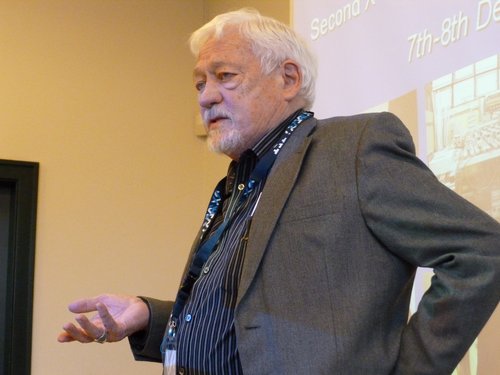X-Change Lab: Learning through Disruptive Technologies
Introduktion til metoden og præsentation af forløbet
Tema: 'disruptive technologies'
Under overskriften 'disruptive technologies' løb det første X-Change Lab af staben i Technucation i december 2011. En del af forskningsprojektets metode beror på labs.
X-Change Lab skaber rammerne for at forskere med forskellige teoretiske afsæt og forskningsinteresser kan mødes om den tematiske fællesnævner, der på forhånd er bestemt som tema. Derfra udveksles, diskuteres og elaboreres på idéer og teorier. Dette sker dels gennem oplæg og debat og dels gennem fysisk interaktion - i dette lab med fremtidige 'disruptive technologies', bestående af 'gesture recognition' og 'augmented reality'.
Forløb og hvad du finder på hjemmesiden
X-Change Lab'et blev i nogen udstrækning dokumenteret. Materialet er behandlet her, og du finder videoer af oplæg og bearbejdninger af gruppediskussioner. Nedenfor finder du det tilgængelige materiale og programmet for de to dages forløb.
Hvad er et X-Change Lab?
Indhold
John Dakers on the liminal spaces between technology and education
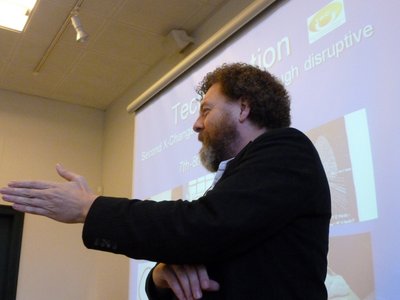
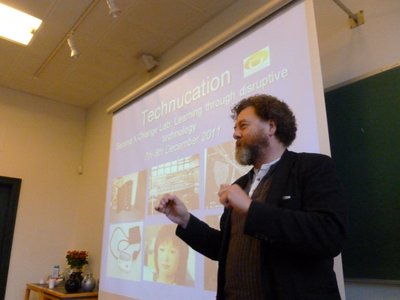
Edited by Oliver Tafdrup
If the question concerning where technologies come from must be understood within a political context, how are we then to understand the agency of technology? Should it be approached from a deterministic point of view or are we, since it’s a question about political processes, still in control?
According to John Dakers we mustn’t fall into a deterministic standpoint. We do still possess control, but the interesting question is what this ‘we’ refer to or in other words who ‘we’ are in this regard. This is one of the areas John Dakers has enquired into.
"This is not, says Dakers, an entirely political question though there is a political dimension to it which is absent from most discussions concerning technology literacy and education, and the question concerning who ‘we’ are in regards to the agency of technology should be seen as an exploration into this political dimension. The liminal space - between technology and education (ed.) – is an area we can get into, to go away from the more technical aspects of pedagogy into a more curious and critical capacity of asking questions and not being worried about asking questions. "
This is a big concern for Dakers who often finds himself giving lectures to classes, that don’t ask critical questions to the content. It indicates that the critical aspect of the education is missing leaving us close the deterministic standpoint which we wanted to avoid. Thus education in technological literacy must find a way to develope and nurture the students' ability to approach technology from a critical point of view.
One of the answers to this challenge is what Dakers refer to as rhizomatic education, and one of the main objectives within this approach to education is to establish an environment where the teacher and the students are prepared to learn from each other thus establishing a space for exchange of ideas.
"From a rhizomatic aspect you’re not saying that knowledge is fixed. As a teacher you have to accept that you are no longer in charge of the knowledge, but instead in charge of the class."
By reconfiguring the traditional relationship between the teacher (subject of knowledge) and students (subjects supposed to know) so that knowledge is something that emerges from the sharing of ideas it is possible to allow the potential of critical thinking to prosper. For the teacher this includes asking questions where the answers are not already known.
But what does this mean for the professions approach to technology? Is it possible to generate a more innovative approach to the technology within these?
Dakers says that we are taking agency away from the teachers. Because the curriculums are so set, we are seeing an emerging tendency where teachers simply teach to the tests and thus creating an educational system where learning becomes more and more instrumental passing of information. In order to promote innovation it’s crucial to avoid that. Instead we must illuminate these political aspects of the professions for the practitioner in order to include them in the decision making. This is a much more democratic including kind of approach.
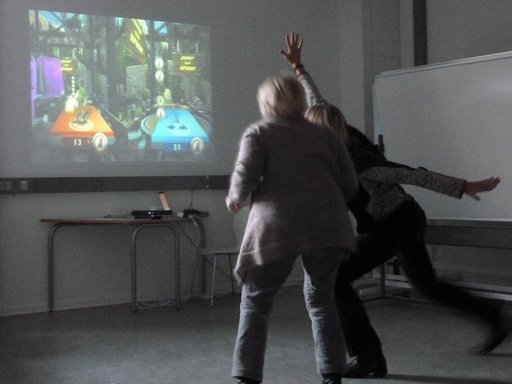
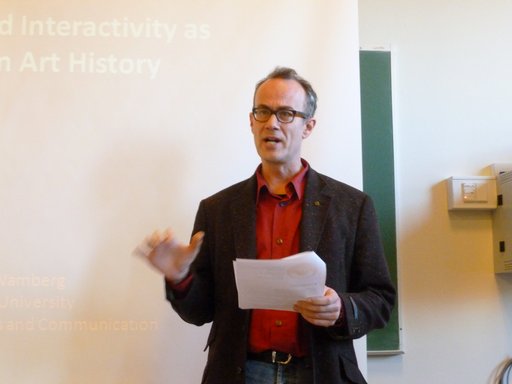
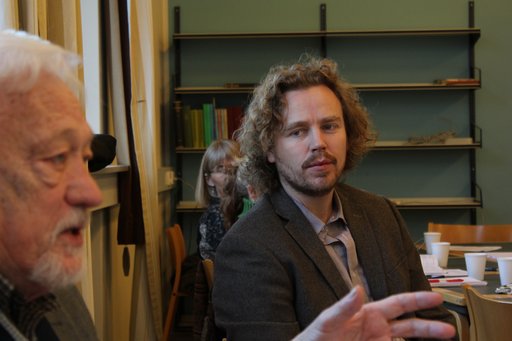
Don Ihde on the Three Technologies that Transformed the Professional Practice the Most
Edited by Bjarke Lindsø
Internet, Word Processing and PowerPoint
"I think the three technologies that transformed the professional practice the most are the Internet, Word Processing and PowerPoint. I will make a couple of comments on each one of these.
The internet of course went through a kind of a transformation. First it was like a partyline phone for avoiding phone taxes, by saying can we meet then and there etc. etc. Then it became more like our travel arranger, and you could do all of your arrangements on the internet across a wider geography. Now it is the main mode of distribution of at least short kinds of articles etc, and you can put your attachments on. Today you need to have somebody with a fast printer if you want to keep up with the flow of that. That is the short story of the internet transformation that has occurred. And there is one side effect. Not everybody accommodated to email, and I know a fair number of philosophers who did one of two things: One was one like in the movie about driving through India: “I’m learning to drive” but what he was doing was to ride behind his shover, who was doing the driving. I know some philosophers who don’t do email themselves, but have their secretary to do their emails. And they never accommodated, and some never adopted email. What is interesting is that most of them have become marginalized in terms of activity within professional conferences etc, etc. Second of course was the internet and then the word processing.
It is very interesting. When I became a dean in 1985, just the time when PCs began to get popular, all people were buying PCs. And again, my kicks on Heidegger and his pen, the minority of my colleagues still composed with pen and yellow pads. And then they transposed in to word processing. Most people went simple from the typewriter to word processing, and I did a survey of the English Department. And by 1987 80% of the English Faculty were doing their writing on word processing. So this is a major transformation of how that goes. Second comment I want to make about it is - I’m not a technological determinist, I don’t think that technology can determine the things you do anything directly - but they do influence.
"I’m not a technological determinist, I don’t think that technology can determine the things you do anything directly - but they do influence."
And one of the things that happened with the adaptation, well two things happened with adaptation of word processing, both of which I was able to predict. One is, first it revived the germanic tone. Almost all manuscripts produced by word processing turned out to be longer than the publishers wanted. The second thing was that there was a multiplication of footnotes. So the word processers actually drew us back to the germanic tone in that respect. The second thing is, of course it changed the style to what I call string style. It is so easy to transform paragraphs by moving them around. Most editors say they recognize the style, because “this paragraph could have been here rather than there”, and probably was there instead of here at some point in the writing process.
The third is probably the most interesting for philosophers in particular because most philosophers did not use blackboards or anything. They just read their papers and they would sit up read up their papers rather dull, and half the audience would go to sleep. The other thing is, when they did do stuff on the board it was usually either formally sentences or English words, so when PowerPoint came in, more and more philosophers started doing PowerPoint presentations. But I think it is still the case, that most of them use text. Very few of them use pictures or images etc. I am contrary – I almost never use text in any kind of presentation – but now it is quite common that PowerPoint is being used in presentations. So they’ve moved from straight forward reading to PowerPoint and I admit I remain entirely irritated by having the text up there and then he reads the text and goes to next slide and read aloud etc. etc. So it is really going back to where you were in the first place with reading.
That was the three technologies that have been most important."
Ihde: Motion in learning
Edited by Bjarke Lindsø
"Another diffculty is to learn to move the things. We are all familiar with seeing ourselves in the mirror and know how to make the right moves and so forth. All of this is learnt. You have to learn to make the motion accordingly. I’ve been going back to painting and I’m using and overhead transparency projector to project the photos onto the canvas. The second part of the stage is to come back after I’ve done cover overlays and to exactly match the photograph to the rough outline I’ve used. I’ve found that very very difficult.
There is a kind of inversion process going on that I haven’t learnt yet. This is a little bit easier using the iPad, but again you still have to learn the distance and so forth, and as you see it in a way overreacts to your motion."
Cathrine Hasse and Ernst Schraube: Does technology equal defensive learning?
Edited by Bjarke Lindsø
"There is a pattern in what the teachers are doing. Before you had to struggle to get some conceptualizations and ideas and for example mathematics is really hard to learn. What is happening is what was before in our mental struggle to understand things is put out on the screen. This is an idea of Technucation empirical material. You don’t have to sit under the green lamp, you can just see it played out even visually and fysically. Before you had to think the concepts, but now you can see them on the visual display. Is that defensive learning?"
"Defensive is a analytical concept and not empirical. It is to understand how to think ourselves into processes. We would have to discuss that. Technology can expand our possibility, and we can come a step further long. Offend there is a talk about the others without even including the learning subject at all. That is the point to argue against this – we have to really get a precise understanding of these technologies. For our everyday life we have to include the perspective of the person, and we need concepts for that. Conceptualizing technological literacy means to develop concepts to understand this process. "
John Dakers: Defining technological literacy by exploring the liminal space between technological disruptions.
Description
Whist the concept of technological literacy cannot be pinned down to some universally accepted identity, it is generally agreed that the social implications arising out of the relationship between the technology/science/human interface is crucial. This relationship has and will continue to have a huge impact on our very existence; socially as well as vocationally. In order to better understand the social impact of technology, in the sense described above, it may be possible to explore and interpret the liminal space, or disruption, existing between one technological incarnation and another.
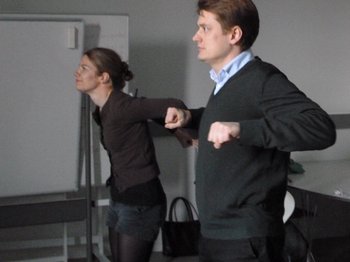
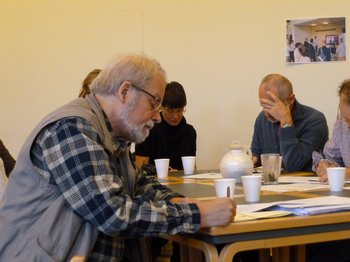
Don Ihde on embodiement and multistabillity in relation technological literacy
Edited by Oliver Tafdrup
During history different kinds of artifacts has been used for writing and these technologies has each been inscribed in a specific cultural practice and history. But what happens when a culture abandons one writing technology for another and how can we understand the space between an abandonment of an old technology and the implementation of a new?
"This is, as Ihde points out, a very important feature that takes many different kinds of shapes. What you can do is valorize – this is what Heidegger did with the pen over the typewriter- in order to try sediment and keep a specific technology. In today’s America there’s several organizations that valorizes outdated technologies, and the biggest of these are NASCAR which is a car racing league. Here you have to have certain kinds of engines, and these are old fashioned. They have a certain kind of valve system which is required. If you’re are a contemporary developer of technology – E.g. Toyota – you have to change your engine in order to the NASCAR racing. This is silly but nonetheless I did the same when I was sailing – when I purchased my last sailboat I finally got around changing from a monohall to multihall, and I know wished that I had done that at least 15-20 years earlier cause it turned out the latter is so superior in performance. I had to ask myself why I did get stock with monohalls for all those years. There are all kinds of these things that happen. I have nothing against that. I have gone to see contemporary calligraphy exhibits in Japan quite a few times. They’re really inventive, and sometimes when I do this with a slideshow I show the new symbols between being and the image which are really interesting. I have nothing against romanticism as long as you recognize this romanticism. "
What about the role of agency in relations to technologies? Is the materiality of the technologies putting limitations on how we can explore the multi stability?
"The notion of multistabillity has that characteristic – it is not anything goes. It’s not deterministic. It does however have a high variability – perhaps indefinite, but it’s neither anything goes or deterministic etc. But on the other hand another aspect of post-phenomenology comes out of the history of phenomenology and the use of variations. Here you want to multiply the possibilities of why this is possible, and of course it turns out that you’re dealing with any kind materiality, not anything remains possible. I’m going back to painting, and I’m doing portraits for the first time in my life and I’m using acrylics, and I’m still in the process of what is this damn medium trying to tell me I can and can’t do. I’m gradually getting better and saying “well, I think I can do translucency”, where I couldn’t do that first, so I’m gradually opening up, but I know there are limits to what can be done with any of those media, and that becomes a concrete learning in the learning of embodiment skills. "
What is the relationship between popular technological artifacts, embodiment and the current generation of children?
"This generation of children for whom these kinds of technologies are totally familiar are also very explorative. When I got my first computer, I was scared to death I was going to crash it. And of course I did several times and I hated it. Todays’ kids are not afraid of doing that, so they try everything and they learn quickly – much more quickly than I – new processes."
